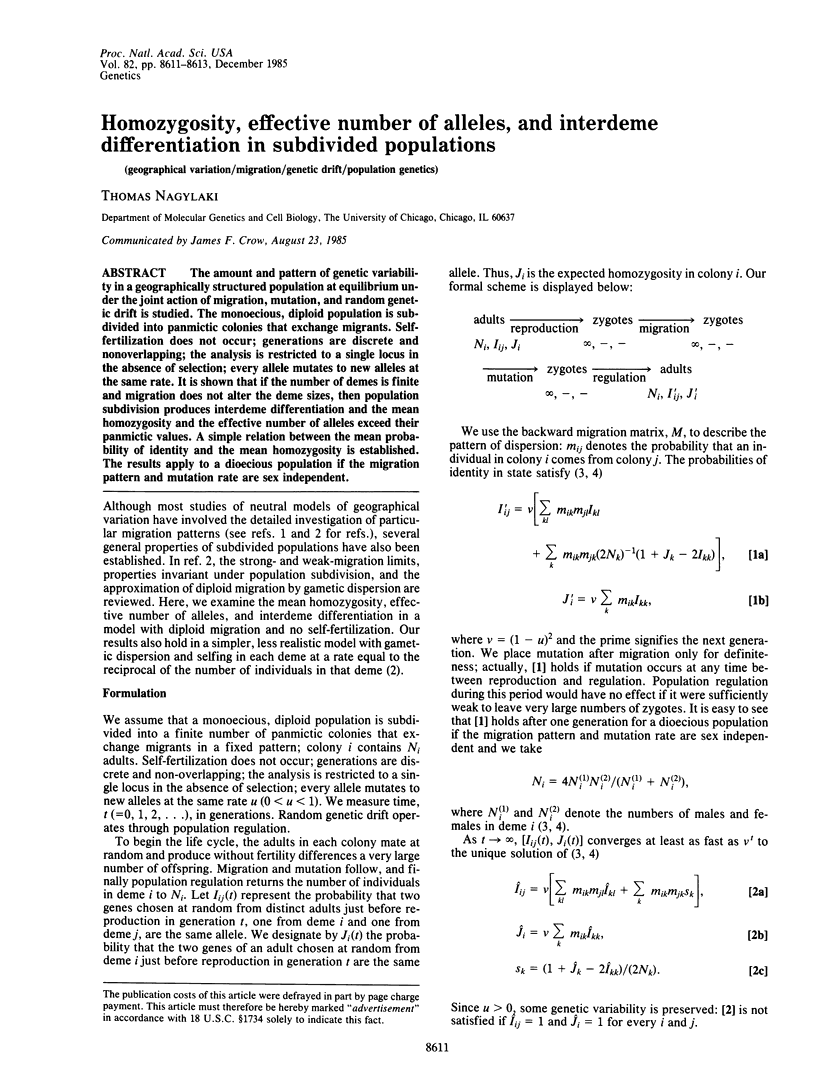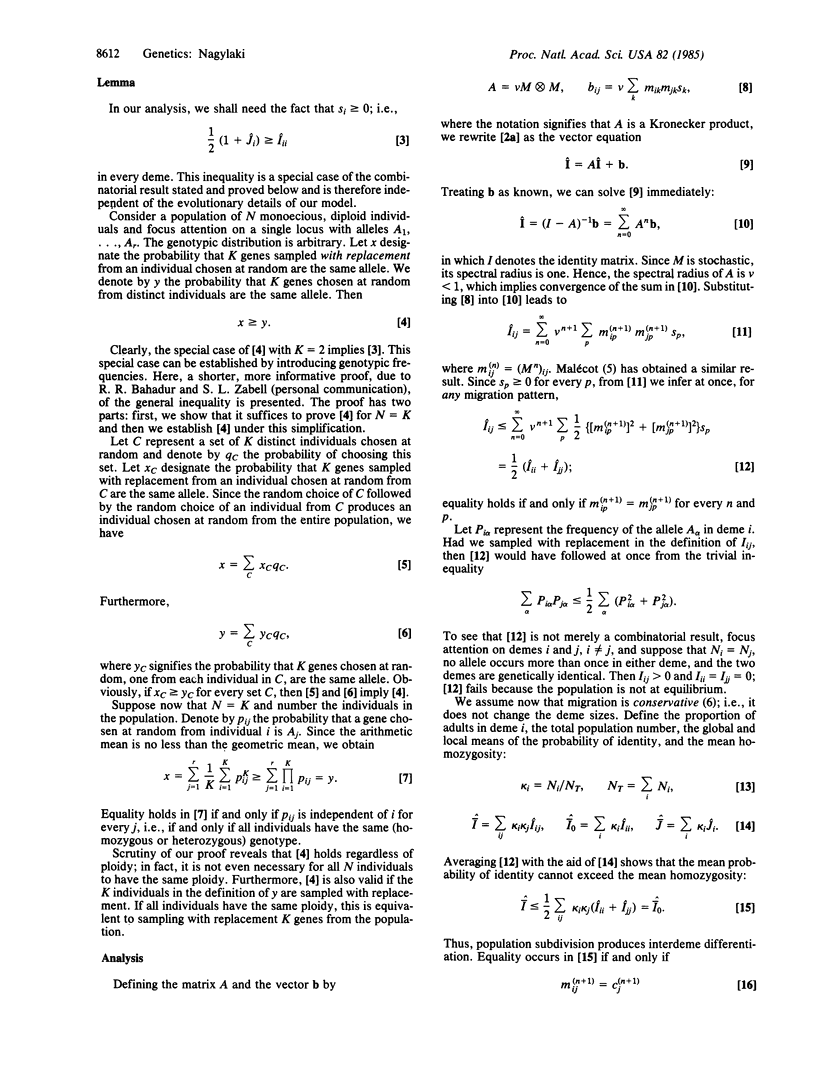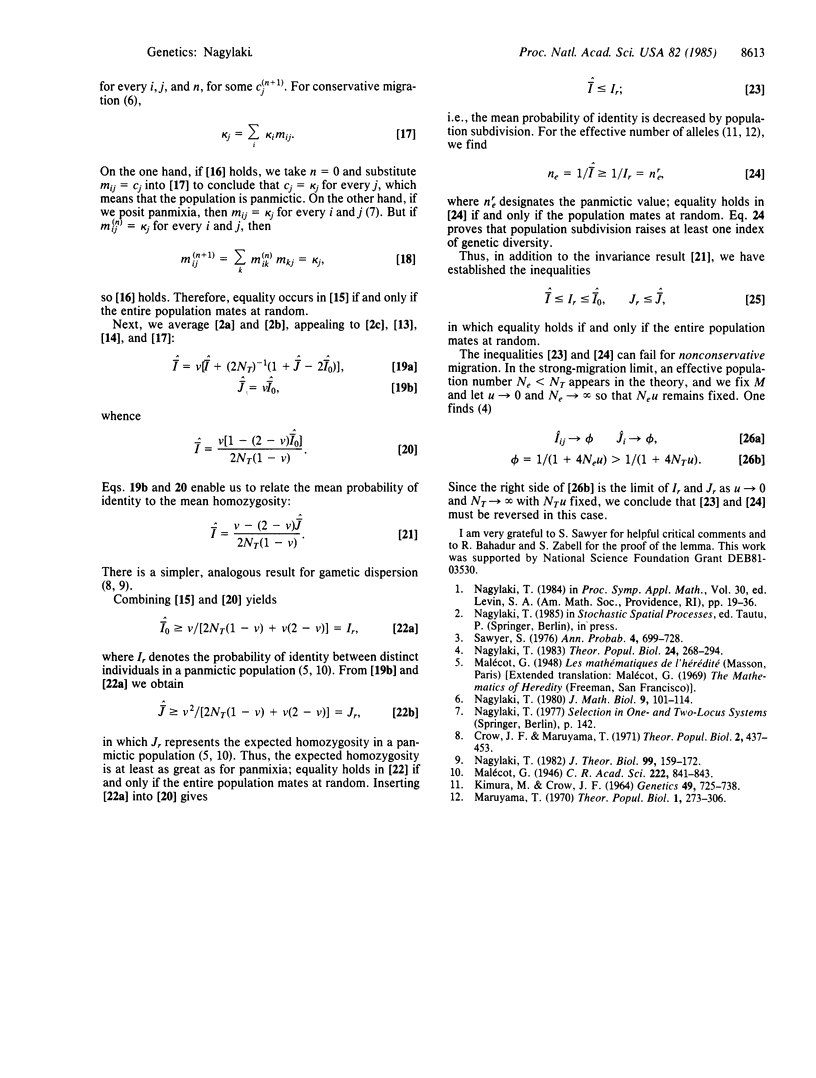Abstract
The amount and pattern of genetic variability in a geographically structured population at equilibrium under the joint action of migration, mutation, and random genetic drift is studied. The monoecious, diploid population is subdivided into panmictic colonies that exchange migrants. Self-fertilization does not occur; generations are discrete and nonoverlapping; the analysis is restricted to a single locus in the absence of selection; every allele mutates to new alleles at the same rate. It is shown that if the number of demes is finite and migration does not alter the deme sizes, then population subdivision produces interdeme differentiation and the mean homozygosity and the effective number of alleles exceed their panmictic values. A simple relation between the mean probability of identity and the mean homozygosity is established. The results apply to a dioecious population if the migration pattern and mutation rate are sex independent.
Full text
PDF


Selected References
These references are in PubMed. This may not be the complete list of references from this article.
- Crow J. F., Maruyama T. The number of neutral alleles maintained in a finite, geographically structured population. Theor Popul Biol. 1971 Dec;2(4):437–453. doi: 10.1016/0040-5809(71)90033-5. [DOI] [PubMed] [Google Scholar]
- KIMURA M., CROW J. F. THE NUMBER OF ALLELES THAT CAN BE MAINTAINED IN A FINITE POPULATION. Genetics. 1964 Apr;49:725–738. doi: 10.1093/genetics/49.4.725. [DOI] [PMC free article] [PubMed] [Google Scholar]
- Maruyama T. Effective number of alleles in a subdivided population. Theor Popul Biol. 1970 Nov;1(3):273–306. doi: 10.1016/0040-5809(70)90047-x. [DOI] [PubMed] [Google Scholar]
- Nagylaki T. Geographical invariance in population genetics. J Theor Biol. 1982 Nov 7;99(1):159–172. doi: 10.1016/0022-5193(82)90396-4. [DOI] [PubMed] [Google Scholar]
- Nagylaki T. The strong-migration limit in geographically structured populations. J Math Biol. 1980 Apr;9(2):101–114. doi: 10.1007/BF00275916. [DOI] [PubMed] [Google Scholar]


